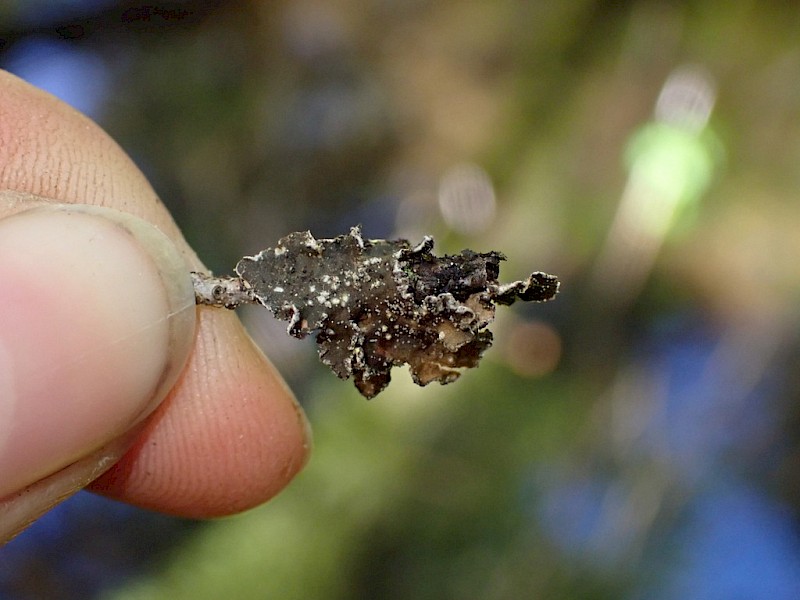BC Parks Foundation
BC Parks iNaturalist Observations Lead to Conservation Triumphs
October 8, 2024
One Million iNaturalist Observations in BC Parks Result in Discovery of Rare, Potentially New-to-Science Species and other Conservation Triumphs
Vancouver, BC – October 8, 2024
Tori Miller wasn’t sure what kind of arthropod she’d spotted crawling atop a lichen-covered rock, but she knew it was something unique.
“I was thrilled when I found out it was likely new to science. It's like discovering a hidden treasure, but even more valuable—because it’s alive, and part of our natural world.”
Miller is one of over 13,000 people who have helped record an astounding one million observations in BC’s provincial parks over the past five years.

This amazing number has resulted in many discoveries, including: a rare and potentially new-to-science species (Miller’s Undescribed Globular Springtail, photographed in the South Okanagan Grasslands Protected Area), new populations for endangered and threatened species, species previously unknown in BC, and many more.
“When the BC Parks iNaturalist project began in 2019, there were fewer than 20,000 observations,” says Andy Day, CEO of BC Parks Foundation. “Because we had these incredible scientists and students at SFU and UVic leading the charge, we thought, ‘Why not go for 1 million observations?’ It’s amazing what can happen when people come together. Every observation counts, contributing to a greater understanding of the diversity in our parks.”

From the depths of the Pacific Ocean to the height of the Rockies, and from desert-like landscapes and grasslands to boreal forests, British Columbia has globally unique habitats that are home to tens of thousands of species.
“There are over 1,000 parks and protected areas safeguarding sensitive ecosystems, but their size and remoteness make it challenging to know what's there, and how it's impacted by climate change and other pressures,” says Brian Starzomski, professor at the University of Victoria and co-director of the BC Biodiversity Program. “People from BC, Canada, and beyond have contributed over one million observations of over 13,000 species. It’s truly a global effort to better understand BC’s biodiversity.”

"Hitting the one million observation milestone is amazing, but even more amazing is the huge number of threatened and rare species that have been discovered, including many firsts for BC and Canada,” says John Reynolds, a professor at Simon Fraser University and co-director of BC Biodiversity Program. “I’m very grateful for the efforts of the 13,000 people who have participated, as well as the support we have received from BC Parks and the Sitka Foundation."
The partnership is now looking to boost the number of observers, observations and species even further and is encouraging all British Columbians to contribute their observations, which can be uploaded on community science apps like iNaturalist.
“We have one of the greatest systems of parks in the world,” says Day. “This is an easy way for all of us to keep it alive and beautiful. And the great thing is that making observations is a healthy, relaxing, and fun activity. Whether you discover an unknown species or not, you’ll certainly discover something each time, including the wonderful feeling you get when you slow down and look closely at the world around you.”

Some Exciting Discoveries
- Undescribed Globular Springtail (Sminthurinus sp.) Observed by Tori Miller in the South Okanagan Grasslands Protected Area, this species was identified as a potentially new species by springtail expert Frans Janssens after Miller uploaded her photograph to BugGuide.
- A red-listed lichen (Pseudocyphellaria mallot) Photographed by Eva Ullström in Gold Muchalat Provincial Park, this lichen marks the first iNaturalist record in Canada. Even more exciting, it reveals a new population site for the species, which helps scientists better understand and protect this rare and threatened lichen.
- A moth (Acanthopteroctetes bimaculata) Observed by Finn McGhee in the South Okanagan Grasslands Protected Area, this moth was previously unknown in British Columbia. McGhee’s photograph is one of the first live images of this species and was voted the most exciting lepidopteran record of 2022 by the BC Lepidopterists Guild.
Media images can be found here.
About BC Biodiversity Program
This program was initiated by the University of Victoria, and Simon Fraser University, with financial support from BC Parks and the Sitka Foundation to ensure all British Columbians and park visitors can have a hand in the research and understanding of BC’s parks.
About BC Parks Foundation
BC Parks Foundation is the official charitable partner to parks and protected areas in BC. Our mission is to create the greatest system of parks and Indigenous protected areas on earth.
Media Contacts:
BC Parks Foundation:
Jennie McCaffrey, jennie.mccaffrey@bcparksfoundation.ca, 778-222-5543./
BC Biodiversity Program & Scientific Information:
Brian Starzomski, starzom@uvic.ca, 250-886-9861.
Love this? For more inspiring stories about conservation wins, community efforts, and ways you can help protect nature, subscribe to our newsletter today.
Similar Stories
-
 February 25, 2020
February 25, 2020
Alien Invasion: 10 Invasive Species Found in B.C.'s Parks
-
 August 26, 2022
August 26, 2022
Subaru Canada Supports Discover Parks
-
 May 7, 2024
May 7, 2024
Restoring Biodiversity in Metchosin Forever
“When I get beneath the surface of things, these are not moments of mystery, they are moments of extraordinary clarity. Everything has the energy of its making inside it.
”